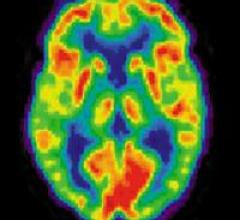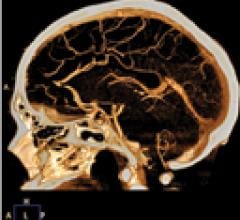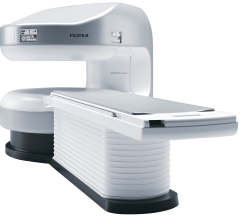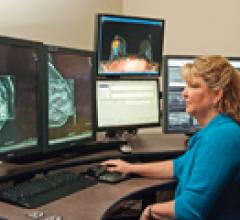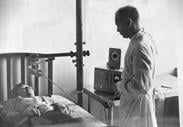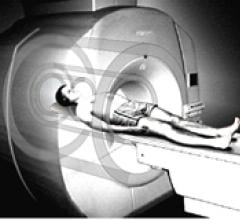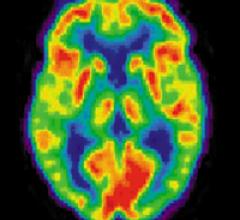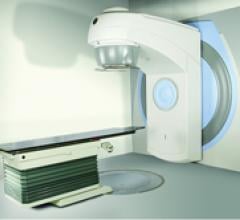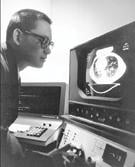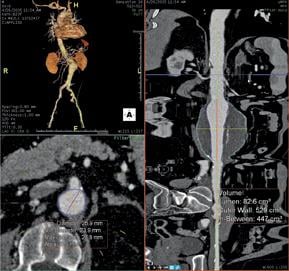July 19, 2011 – The study "Use of Florbetapir-PET for Imaging beta-amyloid Pathology," published in the Jan. 19, 2011, issue of the Journal of the American Medical Association, has been selected by the Alzheimer's Association as the winner of the 2011 de Leon Prize in Neuroimaging for the “Best Paper” award in human neuroimaging, in the Senior Scientist category. The award was presented Saturday, July 16, 2011, to Chris Clark, M.D., co-author of the paper and medical director at Avid Radiopharmaceuticals, a wholly owned subsidiary of Eli Lilly and Co., during the Alzheimer's Imaging Consortium (AIC), in Paris, France. The AIC was a preconference to the Alzheimer's Association International Conference 2011 (AAIC 2011), held from July 17-21, 2011.
July 18, 2011 — Cardinal Health opened The Center for the Advancement of Molecular Imaging on Monday in Phoenix. The center is a new, first-of-its-kind collaboration laboratory that will expedite the development of nuclear imaging agents that treat complex diseases like cancer, heart disease and neurological disorders.
CTA is one of the most complex procedures routinely performed on a CT scanner. A successful CTA exam requires synchronization of the timing of the scan with maximum vessel contrast enhancement.
Fujifilm’s APERTO Lucent is a 0.4T mid-field, open MRI system addressing today’s capability and image quality needs ...
John C. Lincoln Health Network, a Phoenix-based health system that includes two hospitals and two dozen physician practices, is setting a new standard for quality breast care. In addition to being one of Arizona’s first truly comprehensive breast centers, the John C. Lincoln Breast Health and Research Center is the first in the state – and only the second in the nation – to offer 3D breast tomosynthesis.
Although mammography retains its place as the first-line modality for regular screening for breast cancer, breast magnetic resonance imaging (MRI) has a firm spot as a valuable complementary tool.

SPONSORED CONTENT — Fujifilm’s latest CT technology brings exceptional image quality to a compact and user- and patient ...
In today’s complex healthcare landscape, protecting sensitive patient information is a top priority. To that end, industry regulations are increasing and complying with HIPAA and HITECH regulations is becoming more costly, even as reimbursement rates drop.
SPONSORED CONTENT — Fujifilm’s latest CT technology brings exceptional image quality to a compact and user- and patient ...
Despite its first commercial appearance in the late 1970s, positron emission tomograpnhy (PET) did not begin gaining widespread acceptance as a viable clinical technology until the mid-1990s. This was after it gained approval for reimbursement and radiopharmaceuticals for PET became more widely available.
As imaging modalities developed in the past 50 years — and ancillary products and services with them — colleagues who shared an interest in specific areas began to form groups to address the needs of their particular niches. Their focus included segments such as radiation oncology, nuclear imaging, women’s health, administration and informatics.
July 18, 2011 – Driving new technologies that will help expand the availability of MRI scanners beyond the hospital to smaller clinic settings, GE Global Research, the technology development arm for the General Electric Company, and the Mayo Clinic have received a five-year, $5.7 million grant from the National Institute of Biomedical Imaging and Bioengineering (NIBIB) and the National Institute of Neurological Disorders and Stroke (NINDS), components of the National Institutes of Health (NIH). They will jointly conduct research to understand design and application issues involved in the use of a dedicated magnetic resonance imaging (MRI) brain scanner to image for a range of neurological and psychiatric disorders such as stroke, Alzheimer’s Disease, Parkinson’s Disease, traumatic brain disorder (TBI), depression and autism.
SPONSORED CONTENT — EnsightTM 2.0 is the newest version of Enlitic’s data standardization software framework. Ensight is ...
July 18, 2011 —Cardinal Health opened The Center for the Advancement of Molecular Imaging on Monday in Phoenix. The Center is a new, first-of-its-kind collaboration laboratory that will expedite the development of nuclear imaging agents that treat complex diseases like cancer, heart disease and neurological disorders.
SIIM documented and archived a large amount of historical information about its organization and segments of the medical imaging industry. These include reminiscences from a founding member, Joseph N. Gitlin, DPH, FSIIM, associate professor of radiology, Johns Hopkins Medical Institutions, which provide an inside look at important milestones, as Gitlin’s career often was interwoven with developments in the industry.
July 18, 2011 – MedQuist Holdings Inc., a provider of integrated clinical documentation solutions for the United States healthcare system, announced the signing of a definitive agreement to acquire M*Modal and its advanced Speech Understanding technology for total consideration of $130 million. The transaction is subject to customary closing conditions, including review under the Hart-Scott-Rodino Act, and is expected to close prior to the end of the third quarter of 2011.
Did you know that approximately one-third of all the data in world is created by the healthcare industry and that ...
July 18, 2011 – Christian Medical College & Hospital (CMC) in Ludhiana, Ind., is the site of the first Elekta Compact linear accelerator in the world to be field-upgraded to an MLCi2-equipped Elekta Compact, completing the transformation in less than a week. MLCi2 shapes treatment beams, enabling doctors to provide more accurate delivery to the target while limiting radiation exposure to surrounding structures.
A lot has happened in medical imaging during the past 50 years, and many of the vendor firms that play a leading role in the imaging industry today have witnessed and helped shape the evolution of the field to attain its place of prominence. As Imaging Technology News marks its 50th anniversary, we asked a group of industry leaders to look back and provide their perspective on the seminal events and trends during the past half-century.
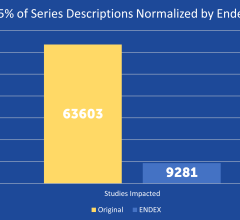
SPONSORED CONTENT — EnsightTM 2.0 is the newest version of Enlitic’s data standardization software framework. Ensight is ...
From my observations, one of the most challenging “best practices” is standardization. In radiology, standardization can be seen in modification to dictation and/or reporting style.
The first applications of and even the term radiosurgery were the idea of Swedish neurosurgeon Lars Leksell, which he published in a seminar article in 1951. Leksell was looking for a minimally invasive way to destroy small tumors and vascular malformations within the skull using radiation.
SBRT is similarly capable of delivering a large, but very precise, dose of radiation through the use of arcs or non-coplanar beams intersecting at the tumor. The accuracy allows clinicians to reduce treatment margins and maximally spare critical normal tissue (including rectum, bladder, urethra and penile bulb) from the high-dose treatment field.
Historically, advanced visualization systems have been rigid, “one size fits all” products. However, recent developments have enabled fully customizable protocols and user interfaces, ensuring the system adapts to each user’s workflow.
Wireless digital radiography (DR) is at the crest of the latest wave of radiology technology. It has a variety of uses, including in the operating room and trauma units, and with bariatric as well as pediatric patients.
With a growing problem of overcrowded emergency departments, coronary computed tomography angiography (CCTA) may be a solution to address the management of chest pain patients. CCTA is increasingly recognized as an accurate, noninvasive tool to safely assess coronary artery disease.

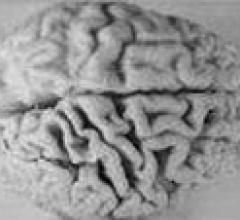
 July 19, 2011
July 19, 2011 
